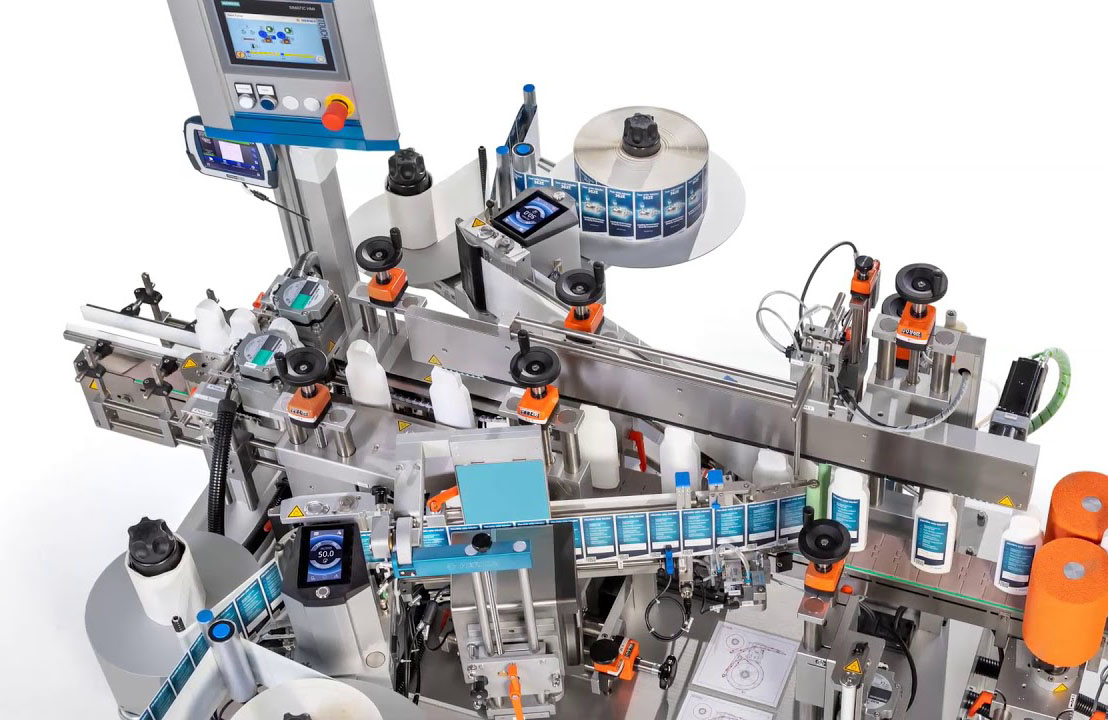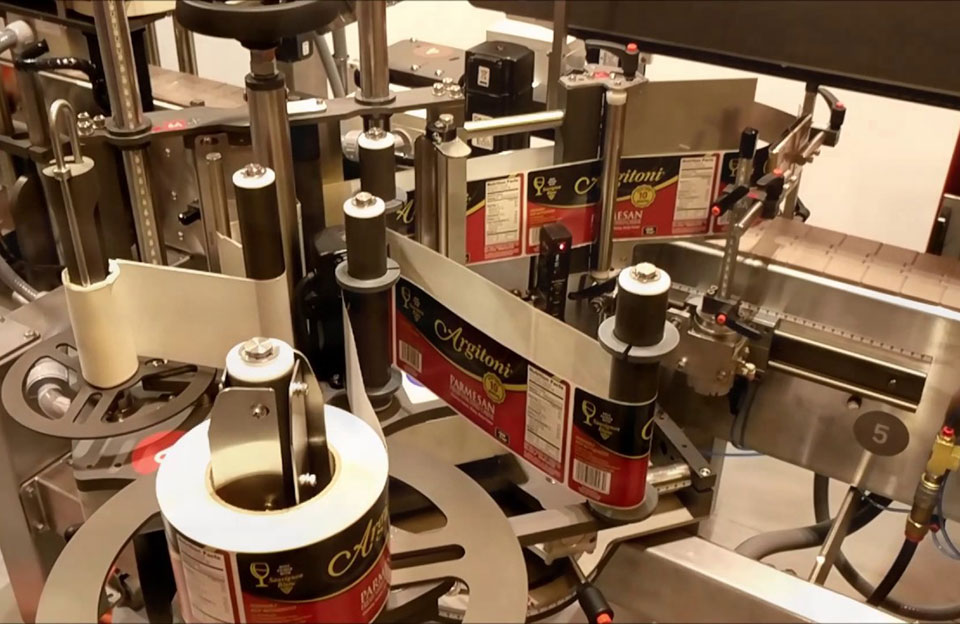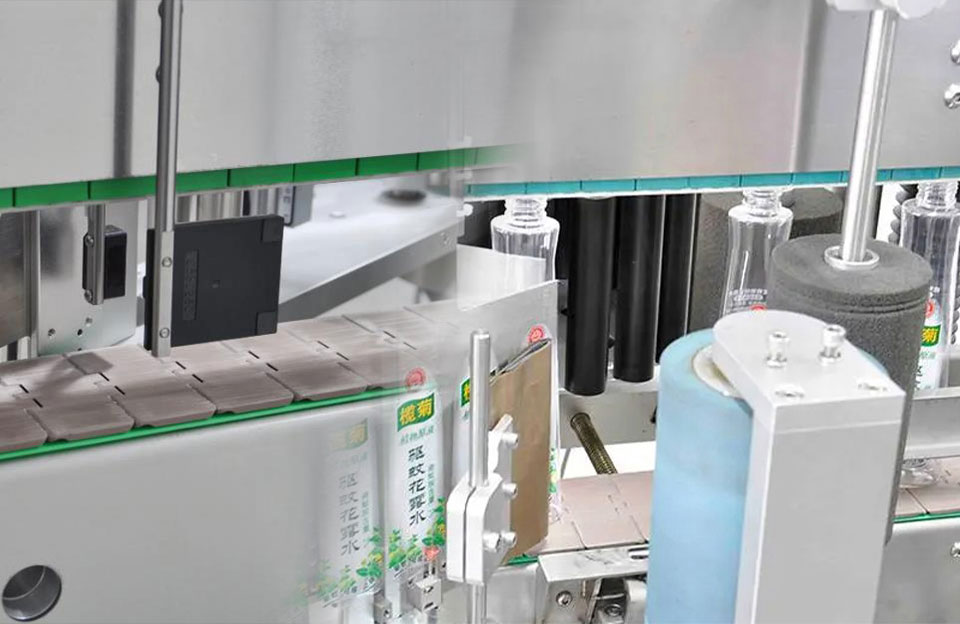The label application system is a crucial component of the labeling machine, and it can accurately and efficiently apply labels to various products or packages.
Accurate labeling is crucial in industries where product identification is essential, such as food and beverage, pharmaceuticals, or cosmetics. Advanced label application system in labeling machine can ensure labels are in the correct position and orientation, minimizing the risk of errors and potential legal or safety issues due to mislabeling.
The Components of the Label Application System
The label application system in labeling machine comprises various components that work together to accurately apply labels to products or packages. The specific components may vary depending on the type of labeling machine and the application requirements. Here are some common components of label application system in labeling machine:
- Labeling Head/Applicator: The labeling head is the main component responsible for applying the labels onto the products or packages. Depending on the labeling requirements, it may use various techniques like pressure-sensitive (self-adhesive), hot melt glue, cold glue, or shrink-sleeve application.
- Label Roll Holder: This component holds the roll of labels from which the machine dispenses the labels during application. It ensures a steady supply of labels without interruption.
- Label Unwinder: In some labeling machines, especially those with high-speed applications, a label unwinder may feed the labels smoothly and consistently to the labeling head.
- Dispensing Mechanism: This mechanism is responsible for releasing the labels from the backing material (liner or roll) precisely at the designated spot on the product. It ensures accurate label placement.
- Product Sensor: A product sensor detects the presence and position of the product as it moves along the conveyor or the production line. This information helps the label application system to apply labels accurately and consistently to each product.
- Conveyor System: The conveyor system transports the products through the labeling process, ensuring a continuous flow and synchronization with the label application process.
- Label Registration System: In cases where labels need to be applied in specific orientations or aligned with pre-existing features on the product, a label registration system is used. It ensures that labels are applied correctly relative to the product’s position or shape.
- Control Panel and User Interface: The control panel provides an interface for the operator to configure the Label Application System, set labeling parameters, monitor the labeling process, and handle any adjustments or troubleshooting.
- Label Rewinder: In some machines, a label rewinder may be present to collect the liner or backing material after the labels are dispensed and applied to the products. This helps keep the work area tidy and organized.
- Label Presence/Void Detection: Some advanced label application systems include sensors to detect missing labels (label presence) or empty spaces between labels (voids) to prevent mislabeling.
- Label Inspection System: In certain applications, an inspection system might be incorporated to verify label accuracy, readability, and quality before or after application.
- Integration and Communication Interface: The label application system in labeling machine may include integration options, such as programmable logic controller (PLC) connectivity or communication interfaces, to synchronize labeling with other production line parts.

Label Application System in Labeling Machine
The Working Process of Label Application System in Labeling Machine
The working process of the label application system in labeling machine involves several steps. The process may vary slightly depending on the labeling machine type and the specific technique used. Here’s a general overview of working process of label application system in labeling machine:
- Label Roll Preparation: The process begins with preparing the label roll. The roll of labels is loaded onto the labeling machine’s label roll holder or unwinder, depending on the machine’s configuration.
- Label Dispensing: As the labeling process starts, the labeling machine’s dispensing mechanism unwinds the label roll, and the labels are fed through the labeling head/applicator.
- Product Sensing: The products or packages to be labeled are placed on the conveyor or production line. A product sensor detects the presence of each product and signals the labeling machine to initiate the label application process.
- Label Application: The labeling head/applicator applies the label to the product as it moves along the conveyor. The specific label application method depends on the machine’s design and the labeling technique used (e.g., pressure-sensitive, hot melt glue, cold glue, or shrink-sleeve application).
- Label Placement: The labeling machine’s control system ensures that the label is accurately dispensed and placed in the designated position on the product. This accuracy is crucial for consistent labeling and avoiding mislabeling issues.
- Label Registration (if applicable): In cases where labels need to be applied in specific orientations or aligned with pre-existing features on the product, a label registration system ensures correct label placement relative to the product’s position or shape.
- Label Detection and Verification: Some advanced label application systems include label presence or void detection sensors to verify that each label is correctly dispensed and applied. This helps prevent missing labels or double labeling.
- Label Roll Rewinding: If the labeling machine has a label rewinder, it collects the liner or backing material after the labels are dispensed and applied to the products. This keeps the work area tidy and organized.
- Repeat the Process: The label application system in labeling machine continues to repeat the labeling process for each product as they pass through the conveyor or production line, ensuring a continuous flow of labeled items.
- User Interface and Control: The operator can monitor and control the labeling machine using the control panel and user interface. The operator may adjust, set labeling parameters, and handle any issues during operation.
- Integration with Production Line (optional): The label application system in labeling machine may be integrated with other parts of the production line through programmable logic controllers (PLCs) or communication interfaces, ensuring synchronization and seamless labeling in the manufacturing process.
Conclusion
The label application system in labeling machine is pivotal in streamlining labeling processes, ensuring product quality, and meeting industry standards. By automating labeling tasks, businesses can achieve higher efficiency, accuracy, and compliance, improving customer satisfaction and brand reputation.


